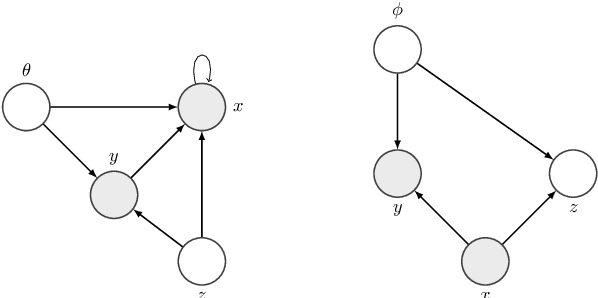Joseph Leroux
Controlling the Interaction Between Generation and Inference in Semi-Supervised Variational Autoencoders Using Importance Weighting
Oct 14, 2020


Abstract:Even though Variational Autoencoders (VAEs) are widely used for semi-supervised learning, the reason why they work remains unclear. In fact, the addition of the unsupervised objective is most often vaguely described as a regularization. The strength of this regularization is controlled by down-weighting the objective on the unlabeled part of the training set. Through an analysis of the objective of semi-supervised VAEs, we observe that they use the posterior of the learned generative model to guide the inference model in learning the partially observed latent variable. We show that given this observation, it is possible to gain finer control on the effect of the unsupervised objective on the training procedure. Using importance weighting, we derive two novel objectives that prioritize either one of the partially observed latent variable, or the unobserved latent variable. Experiments on the IMDB english sentiment analysis dataset and on the AG News topic classification dataset show the improvements brought by our prioritization mechanism and exhibit a behavior that is inline with our description of the inner working of Semi-Supervised VAEs.
 Add to Chrome
Add to Chrome Add to Firefox
Add to Firefox Add to Edge
Add to Edge